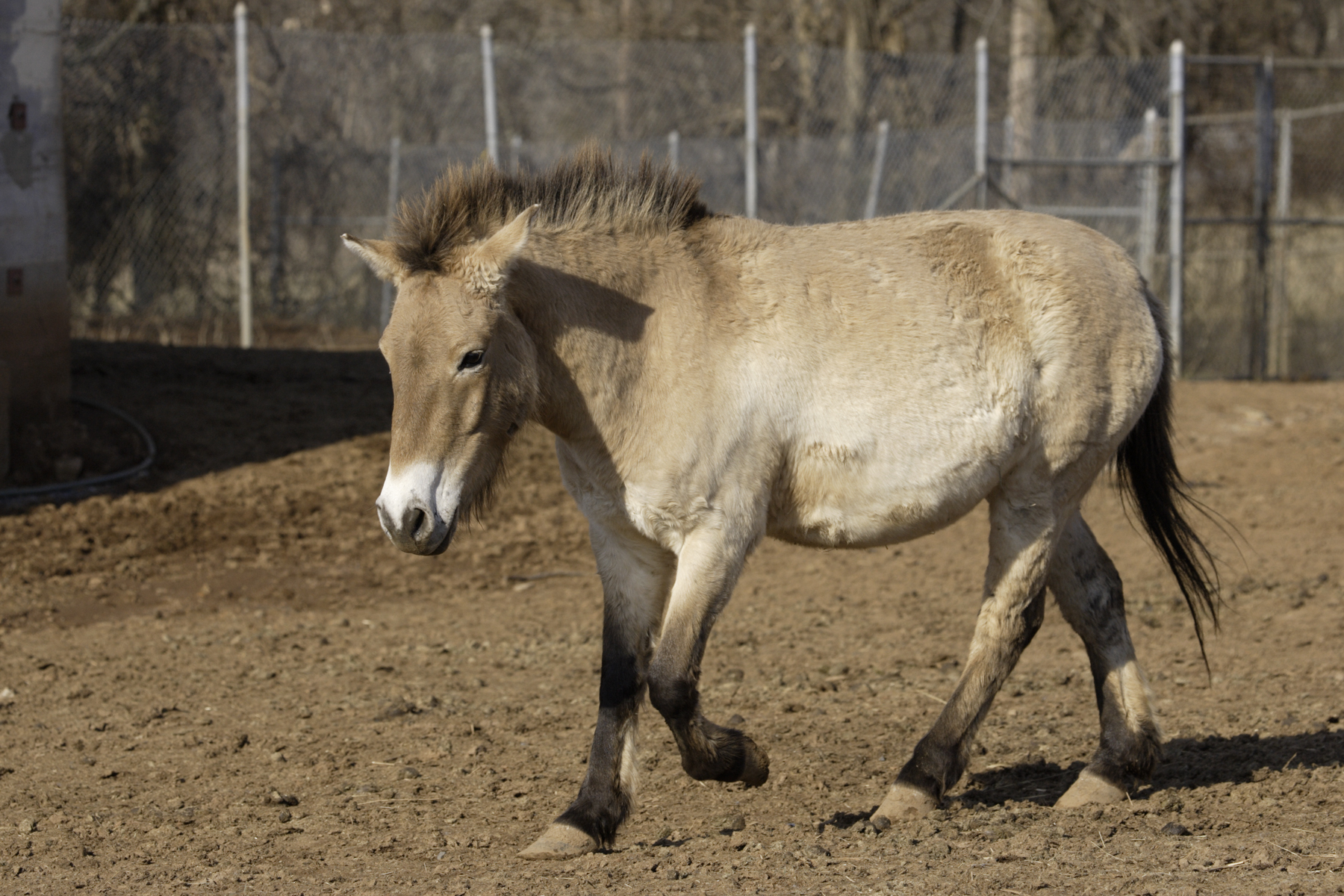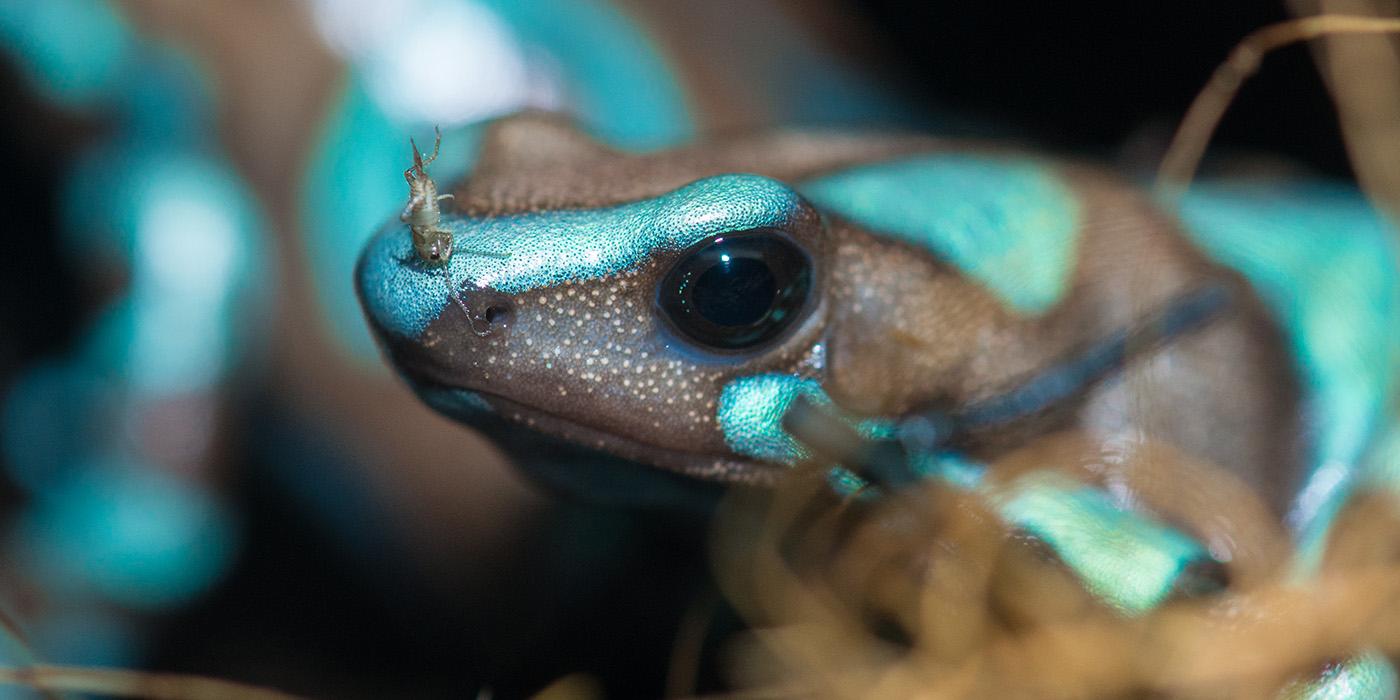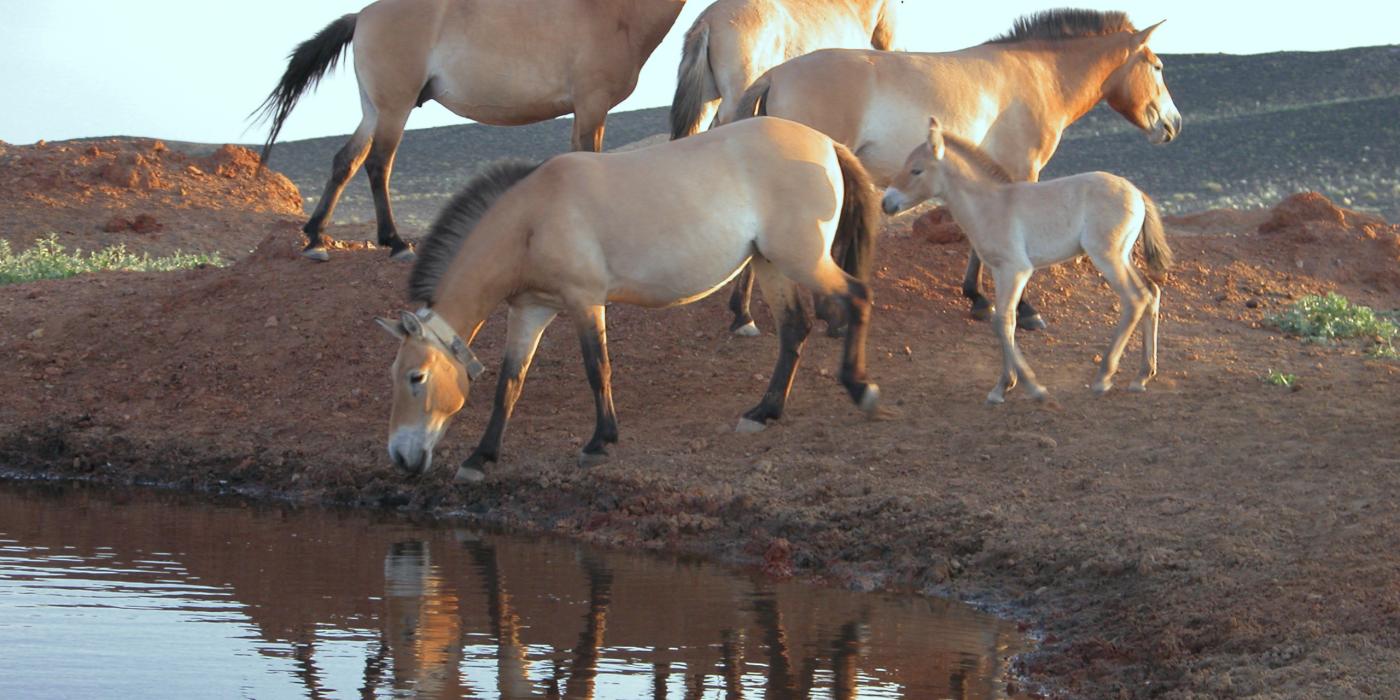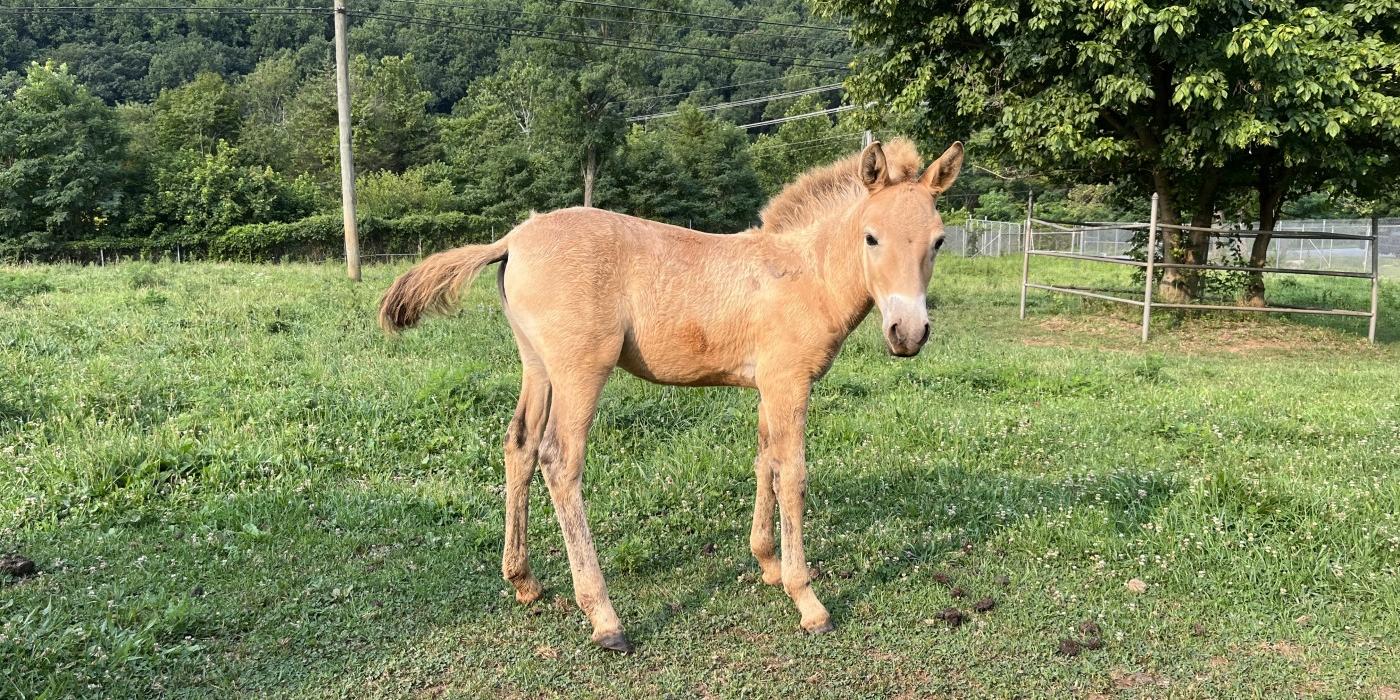Endangered Przewalski’s Horse Dies at Smithsonian Conservation Biology Institute
Maja’s Colt Is Paired With His Half-sister for Companionship
Maja, a 13-year-old Przewalski’s (cha-VAL-skee) horse, was humanely euthanized at the Smithsonian Conservation Biology Institute (SCBI) Aug. 13, for renal failure. Maja began showing signs of illness Aug. 11 and during the following days stopped eating, produced blood in her urine and had difficulty standing and walking. Because of her rapidly declining condition, lack of response to treatment and care, and laboratory tests that supported renal failure, veterinarians and keepers elected to humanely euthanize her. A full necropsy report, which could provide more information about the underlying cause of Maja’s renal failure, will be completed in four to six weeks.
Maja gave birth to a colt, Zygmund, May 9, who at the time of Maja’s death, had already started eating solids. Anne, an experienced mother and easy-going female, was chosen to provide companionship for Zygmund. Anne is also Maja’s daughter and Zygmund’s half-sister. The two are doing well together and have visual access to the rest of SCBI’s herd of female Przewalski’s horses, but will live adjacent to them until Zygmund is a little older. Keepers are also monitoring Zygmund very closely for any sign of illness and to ensure that he continues to gain weight. He has not displayed any signs of illness.
Maja moved to SCBI in 2007 from the Stuttgart Zoo in Germany based on a breeding recommendation. Her genes were not well-represented in the population of Przewalski’s horses living in North America. She gave birth to three foals, Anne born in 2008, Batu born in 2013 and Zygmund.
All of the Przewalski’s horses (the last species of horse that has never been domesticated) alive today are descended from 14 founding individuals. The species was extinct in the wild in 1969. Today, a population of about 500 horses live in the wild in Mongolia, China and Kazakhstan, as the result of reintroduction efforts. SCBI scientists use satellite GPS collars to track and map the movements of reintroduced horses in China. They are working with collaborators at The Wilds in Ohio to develop new solar-powered tracking devices that can be braided into horses’ tails and are more comfortable for them to wear. The new devices are much lighter than current satellite collars and could extend the lifetime of the trackers, enabling scientists to collect more data on the horses.
SCBI plays a leading role in the Smithsonian’s global efforts to save wildlife species from extinction and train future generations of conservationists. SCBI spearheads research programs at its headquarters in Front Royal, Virginia, the Smithsonian’s National Zoo in Washington, D.C., and at field research stations and training sites worldwide. SCBI scientists tackle some of today’s most complex conservation challenges by applying and sharing what they learn about animal behavior and reproduction, ecology, genetics, migration and conservation sustainability.
# # #
Photo: Mehgan Murphy, Smithsonian Conservation Biology Institute
Related Species:




